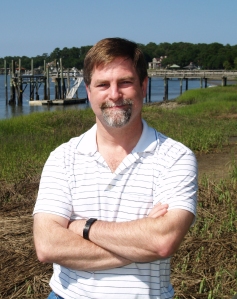The banks of the Atlantic Intracoastal Waterway (AIWW), an artificial channel running through Georgia’s marshes behind the barrier islands, are steadily eroding, and there are several possible causes, including wakes from recreational boats. That is the conclusion of a year-long study by scientists at the Skidaway Institute of Oceanography.
 “Our goal was to quantify the impact that waves are having on the Georgia segment of the AIWW,” said Skidaway Institute professor Clark Alexander. “We also wanted to see if the salt marshes that line much of the waterway were expanding or retreating.”
“Our goal was to quantify the impact that waves are having on the Georgia segment of the AIWW,” said Skidaway Institute professor Clark Alexander. “We also wanted to see if the salt marshes that line much of the waterway were expanding or retreating.”
Georgia contains more than one third of the salt marsh on the eastern coast of the United States and more than 90 percent of its AIWW shoreline is salt marsh. These marshes are essential habitat for fish and crustaceans because they play an important role in the life cycle of most local commercial and recreational species. The AIWW was designed to support both recreational and commercial vessel traffic.
“The major environmental impact of boats on the estuarine environment is the erosion of the channel margins from wakes,” said Alexander. “In Georgia, this diminishes the extent of the salt marsh habitat and causes the channels to widen – in some cases, at rates of up to half meter a year, which is pretty significant.”
Wakes undercut the marsh, causing to them to fail and collapse, particularly at low and mid-tides. Frequently, intertidal oyster bars are buried by eroded sediment, and oyster larvae are hindered from settling because shell material is not available upon which to settle.
Erosion is a natural process in salt marshes. However, in a natural setting, when one side of a tidal creek erodes, the other side usually accretes. Along the AIWW this was typically not the case. Alexander found extensive stretches where the shoreline was eroding on both sides of the channel.
Alexander and his team used historic and recent charts and aerial photography to track the erosion and accretion along the entire 91 mile length of the waterway between South Carolina to Florida. They also used a combination of high-definition video camera connected to a Global Positioning System (GPS) receiver to document both sides of the waterway along its length.
The research team examined shoreline change over two time periods, the first from 1933 to 1976 and the second from 1976 to 2004. The team limited their study to the eight relatively narrow main sections and six alternative sections of the waterway, avoiding the sounds where wind and storm waves might have a significant impact on shoreline change.
“Erosion has become increasingly significant and widespread in the 1976 -2002 time period,” Alexander said. “That isn’t to say that every section is eroding, but most of them are.”
Comparing the earlier time period to the later, the study found a strong trend towards more erosion in the more recent time period. Boat traffic and their wakes provide a mechanism for bank erosion.
“We don’t see commercial boating as being significant because the number of ships and tonnage in the AIWW has gone down by about 80 per cent in the past 18 years,” said Alexander. “But recreational boat registrations in coastal counties (currently about 29,000) have continued to increase.”
Alexander also has another explanation that cannot be ruled out with current information. Except for two short segments, the Corps of Engineers is no longer dredging the AIWW to maintain its target depth and sea level is rising at about 1 foot per century. The channel could be widening because it is becoming shallower but must still transport and contain the same amount of water. “Boating is most likely the immediate primary erosion force, but rearrangement of the channel cross section may contribute as well,” he said. “We just don’t know absolutely at this time.”



A trawler cruising at displacement speed will not cause any more damage to the shoreline than a light breeze. You may want to replace the boat pic with one more appropriate, say a sportfisher on plane, or at least a boat making a wake.